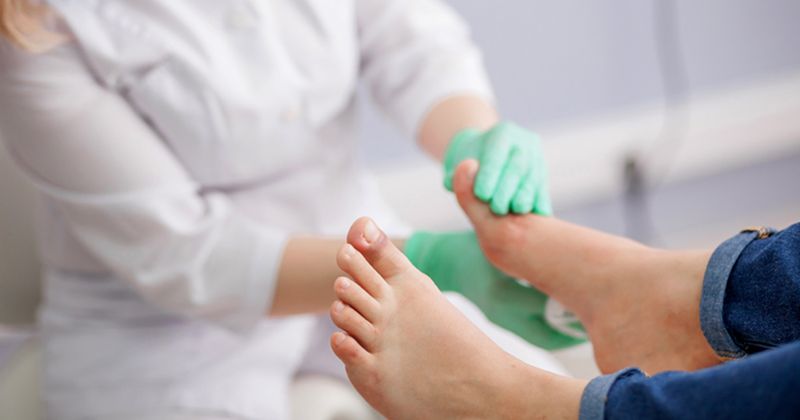Infection
Mycobacterial infections rare among people with diabetic foot infections
November 28, 2023
2 min read
Key takeaways:
- Mycobacterial infections of the foot and ankle are rare among patients with diabetic foot infections.
- No patients included in the study had clinically significant positive cultures.
Clinicians and microbiologists who care for patients with diabetic foot infections may be able to decrease the use of mycobacterial cultures and health care costs because these infections are uncommon, according to study data.
“There are no standards on what specific types of cultures should be checked in the workup of diabetic foot infections (DFIs). Operating room workflow supports collection of multiple culture types, including mycobacterial cultures, when there is concern for infection,” Laila Castellino, MD, medical director of infectious diseases and outpatient parenteral antimicrobial therapy at Parkland Health and assistant professor in the division of infectious diseases and geographic medicine at UT Southwestern Medical Center, told Healio.
“At our institutions, we have several patients with risk factors for mycobacterial infections, including tuberculosis and nontuberculous mycobacteria, adding to the complexity of our patient population,” Castellino said.
She added, “However, mycobacterial cultures are expensive and time consuming; hence, we sought to determine if they truly added any value in the standard workup of patients with DFI.”
Castellino and colleagues performed a retrospective chart review of any adult patients undergoing surgery for DFI between Sept. 1, 2019, and Dec. 31, 2022, at Parkland Health and William P. Clements Jr University Hospital with bacterial and/or mycobacterial cultures sent from surgical specimens, including swabs, soft tissue and bone.
The researchers reviewed the charts of all patients with positive mycobacterial cultures to determine their treatment and outcome at last known follow-up and determine the clinical impact of routine acid-fast bacilli (AFB) cultures of DFI over 3 years.
In total, 2,340 patients from both hospitals met inclusion criteria, of whom 2,280 (97%) had bacterial cultures performed with bacterial organisms identified in 1,942 cases (83%). Of the 1,877 AFB cultures completed at the two locations, two were positive for AFB.
The first culture was obtained from soft tissue of a 51-year-old woman with diabetes and end-stage renal diseases (ESRD) on peritoneal dialysis, with a left foot wound to the bone. The culture was positive for Mycobacterium avium/intracellulare and deep soft tissue cultures concomitantly grew Staphylococcus aureus.
The second culture for Mycobacterium abscessus was from a 74-year-old man with diabetes, ESRD on hemodialysis, peripheral vascular disease and multiple gangrenous digits requiring a left transmetatarsal amputation, with wound dehiscence requiring subsequent revision transmetatarsal amputation. According to study, the patient’s bone cultures were positive for Pseudomonas aeruginosa and Enterobacter cloacae, and one of two AFB cultures grew M. abscessus. Neither patient received nontuberculous mycobacteria-specific therapy and both were “well recovered” by their last known follow-up appointments.
The researchers wrote that in both of these instances, neither case was clinically significant nor specifically treated, which adds to the growing body of literature that “routine AFB cultures are not warranted in musculoskeletal infections, including DFI.” They added that based on an estimated cost of $78 per negative AFB culture and $358 per positive AFB culture, $146,966 of health care expenses could have been avoided, including an estimate 1,251 laboratory hours spent processing these cultures.
“Clinicians and microbiologists who care for patients with diabetic foot infections can use these data to implement diagnostic stewardship practices to limit the use of mycobacterial cultures, decrease health care costs, and limit potential patient harm from unnecessary antibiotic exposure,” Castellino said.

